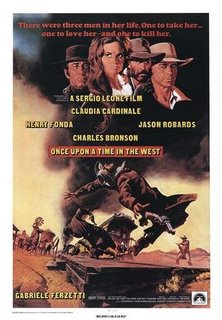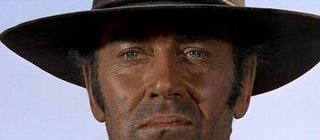Love and Anarchy
 aka "Film d'amore e d'anarchia, ovvero: stamattina alle 10, in via dei Fiori, nella nota casa di tolleranza..." (Lina Wertmüller, 1974) First of all, I have to say that I approached Lina Wertmuller's film with some wariness. I have a built-in prejudice about movies and directors that are praised to the skies by critics, fawned over by the press and I tend to go to that particular movie with an attitude of "All right....prove it!" That's a terrible way to go see a movie; you should be completely unprejudiced (which a lot of critics aren't). Your mind should be a complete blank (which is easy for a lot of critics). You can't be unprejudiced in any endeavor you try. So...that, for what it's worth, is my apology for not being at all thrilled by Wertmüller's Love and Anarchy to everyone who was.*
aka "Film d'amore e d'anarchia, ovvero: stamattina alle 10, in via dei Fiori, nella nota casa di tolleranza..." (Lina Wertmüller, 1974) First of all, I have to say that I approached Lina Wertmuller's film with some wariness. I have a built-in prejudice about movies and directors that are praised to the skies by critics, fawned over by the press and I tend to go to that particular movie with an attitude of "All right....prove it!" That's a terrible way to go see a movie; you should be completely unprejudiced (which a lot of critics aren't). Your mind should be a complete blank (which is easy for a lot of critics). You can't be unprejudiced in any endeavor you try. So...that, for what it's worth, is my apology for not being at all thrilled by Wertmüller's Love and Anarchy to everyone who was.*On the debit side of the ledger,** Ms. Wertmüller tends to stress very arty-looking shots in her work but at times when the movie isn't really doing anything. When the movie takes a lull in the action, we are given very striking, if obvious compositions. Why? Her dialog is, at times, very unoriginal. Directors should at least come up with new cliches for their characters to spout (and this is a questionable point, as the film is subtitled, so the translations may be a little rough--and again, with both of the Saturday night films, they are subtitled--sometimes invisibly super-imposed over white objects--so go early, as the best place to read them, if you can at all, is on the main floor of 130 Kane). Ms. Wertmüller's portrait of a high-echelon Fascisti is badly caricatured, turning him into an Italian Colonel Klink. Also, easy irony turns me off, as when a light little theme is used to accompany a character's death by bludgeon. Nothing much there to praise.What there is, is in the performances. Giancarlo Giannini is someone to praise to the skies, a more likable sad-sack I have never seen since Buster Keaton, and there is an immediate identification and sympathy for him when he first appears on the screen. He is a delight, and he keeps the film above water for quite awhile.
Lina Wertmüller is still making films, but the critical parade has moved on. When her Swept Away... was re-made by Guy Ritchie a few years ago, featuring Mrs. Ritchie in the lead, the film was attacked for her screeching, unpleasant performance, probably forgetting the fact that it was in keeping with the original. Lina Wertmüller was (and is) a challenging film-maker, exploring her themes with a none-too-subtle hand, and making points that polarized film-goers, except for the fawning. Lovers didn't love Love and Anarchy and neither did anarchists--a San Francisco anarchist group picketed and distributed leaflets denouncing the film and Wertmüller during its initial run. Perhaps they didn't know she was making a tragedy. (I wonder if anarchists picket in an orderly manner...or if they just make it up as they go....Hmmm. best not to think too much about that).
The cinema needs movers and shakers like Lina Wertmüller, if only to challenge the complacent. Then again, the complacent probably wouldn't seek out one of her films.The view from 2023: Lina Wertmüller died December 9, 2021 at the age of 93. She was the first female director to be nominated for an Oscar—in 1976 for her film Seven Beauties. Someone has to be first, even if it is late. And Wertmüller, whose work was seemingly omnipresent in the 1970's, could not be ignored.
Her last film was 2004's Too Much Romance...It's Time for Stuffed Peppers, which starred Sophia Loren and F. Murray Abraham.
* Whatever thoughts one has about Lina Wertmüller or any director, the best policy is to go into any film with an open mind, thereby allowing yourself the luxury of appreciating what is there, without being hampered by predilections towards negativity. One makes one's own reality. If you walk into a movie expecting it to be a bomb because of "X," chances are you will walk out convinced it's a bomb (because of "X"). And in the work of confirming your own opinions by ticking off your personal check-list of dislikes, you will be more than likely to miss something that might change your mind. I don't believe "Once a hack, always a hack." Every film is a learning experience, for creator and viewer. I've seen too many good films by directors I haven't liked, to believe, or trust, in prejudices.
** See what I mean about ticking off a checklist of dislikes?




















































